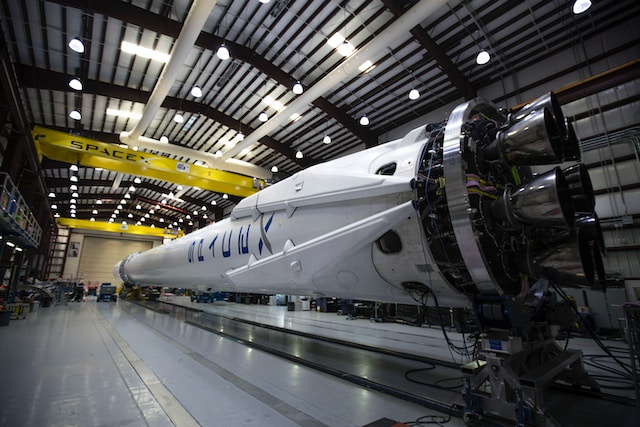Modern life depends on communication and travel. Satellites play an important role in communications. For example, we depend on satellites for Internet, GPS, weather prediction etc. for managing our day-to-day life. As far as traveling is concerned, airplanes play an important role.
Dr. Sachidananda Kangovi, while working as a senior scientist at the National Aerospace Laboratory in Bangalore in India, realized that satellites needs rockets to put them in desired orbits and rockets have engines. These engines develop enormous thrust by discharging copious amount of flow of gases from nozzles. Similarly, airplanes have turbofan engines that too develop enormous thrust by discharging copious amount air flow from their exhaust nozzles. In both rocket engines and airplane engines thrust depends on nozzle design.
In addition to civilian applications of satellites and airplanes, there are military applications of satellites and combat aircrafts with turbojet engines and transport aircrafts. Here too rockets are needed to launch satellites in to orbits. All of these aerospace vehicles again have engines providing enormous thrust by discharging copious amount of gas flow from exhaust nozzle(s). In, addition, military also needs many types of missiles which also have engines that provided thrust by exhausting enormous amount of gases at high rate of speed.
Dr. Kangovi also recognized that the exhaust flows from engine(s) interacts with free stream and the resultant flow has impact on control surfaces like fins on rockets/missiles and ailerons, flaps and elevators on airplanes. These control surfaces are critical for navigating aerospace vehicles to their desired destinations.
After recognizing the importance of nozzle design on the engine thrust and role of engine exhaust flow on the performance of the control surfaces, Kangovi designed, developed, and built a unique special purpose wind tunnel called “Base Flow Facility” during 1977-1982 time period at the National Aerospace Laboratory. This type of important testing capability was not available in India prior to this facility.
The Base Flow Facility, designated as a “unique test facility in the world” by the National Aerospace Laboratory, is a testament to Kangovi's expertise in experimental aerodynamics and innovative approach to designing cutting-edge testing facilities. Creating a unique testing facility is a challenging task. It requires a deep understanding of the specific needs and requirements of the industry and the ability to design a facility that can accommodate those needs. Kangovi's work at the National Aerospace Laboratory perfectly shows how a creative and innovative mind can turn a concept into a reality.
Kangovi's work on the Base Flow Facility is just one example of his many contributions to the fields of experimental aerodynamics. In 1982, Dr. Kangovi moved to the US. In the US, he applied his expertise in experimental aerodynamics to develop inlet air moisture separators for marine and land-based gas turbine engines like GE LM-2500. The moisture separators that he developed are used on many ships. Later, while working in Boeing, Kangovi applied Computational Fluid Dynamics (CFD) modelling to study helicopter rotor flow field, computing forces and moments from airfoil pressure distributions and design optimization using parallel processing.
Dr. Kangovi then worked in Johnson & Johnson on the problem of pneumatic transport of particles using computational fluid modelling to determine particle trajectories. He then built test rigs to verify the CFD results and made recommendations for production line. His expertise in these fields has led to the development of many cutting-edge technologies and helped advance the aerospace industry in India and worldwide.
During the onset of digital revolution, Kangovi transitioned from CFD to Information Technology field. He applied his knowledge of computers to the then burgeoning internet technology area especially in the telecommunications sector.
Kangovi's work in the information technology sector is also worth mentioning. His contributions to developing operational and business support systems (OSS/BSS) for communication industries have created more efficient and effective customer onboarding, provisioning, billing and support systems with Service Linked Multi-State System (SLIMS) at its core. His work on the SLIMS has received US and global patents. This has revolutionized how telecom services are provisioned and managed.
Kangovi's innovative and creative approach to problem-solving is evident in all his work. Whether it's designing a unique testing facility or developing new technologies for the telecom industry, Kangovi's ability to turn concepts into realities is truly impressive. His work has profoundly impacted the aerospace and telecom industries and helped shape how we live and work today.
Certainly! Kangovi's journey is inspiring, showing how hard work, perseverance, and dedication can lead to success in different fields. His contributions to experimental aerodynamics, computational fluid dynamics, computational modeling, and information technology have helped shape and improve various industries.
In addition to his professional achievements, Kangovi has also published two narrative non-fiction books, and a movie based on one of his books is being made by an award-winning director/producer. Moreover, he had been an adjunct professor at DeVry University, teaching MBA-level students courses related to decision support systems, DWBI, portfolio, program, and project management in its School of Business and Management.
Kangovi's journey is not only remarkable because of his professional achievements but also because of the obstacles he faced and overcame. Despite a humble background in India, Kangovi pursued his passion for engineering and technology and has significantly contributed to various fields. His story is a testament to the fact that anyone can achieve their dreams with hard work, dedication, and perseverance.
In conclusion, Dr. Sachidananda Kangovi's contributions to experimental aerodynamics, computational fluid dynamics, computational modeling, and information technology have helped shape and improve various industries. His expertise in information technology, especially Operational and Business Support Systems and Enterprise Architecture, has enabled him to lead teams in building multiple systems for different companies. Additionally, his journey is inspiring, showing how hard work, dedication, and perseverance can lead to success in different fields, regardless of one's background or upbringing.


No comments yet